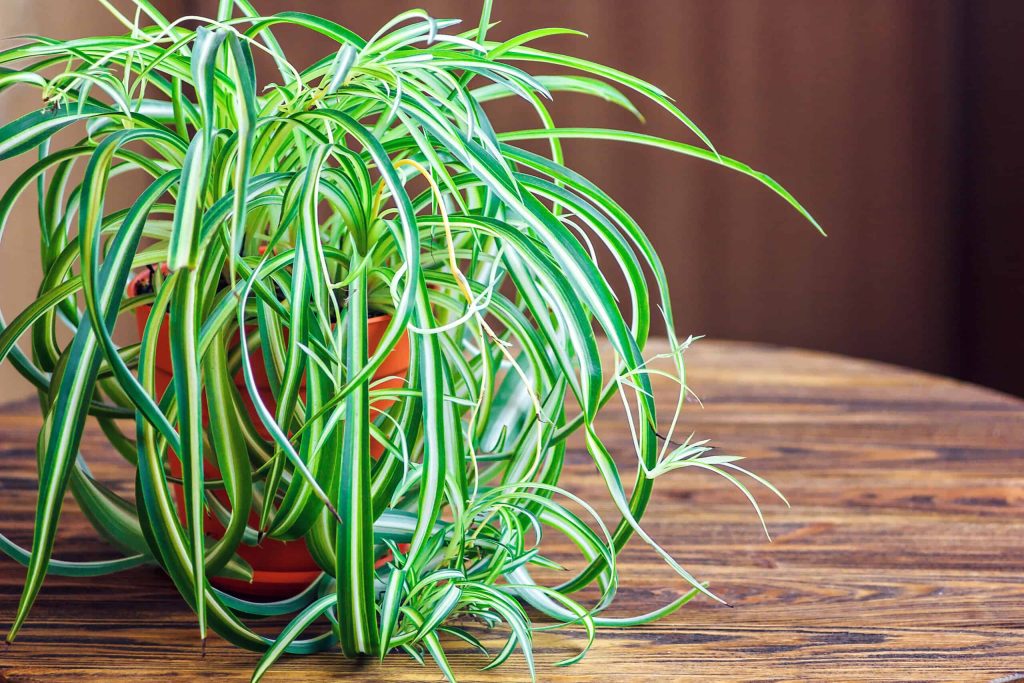Native to tropical and southern Africa, the Spider plant is easily recognized by its long, thin, green, arching leaves. While it comes in a variety of colors and sizes, the variegated Spider plant is the most popular, sporting a white stripe down the center of its leaves. The unique leaves of the Spider plant are responsible for their name. Not only does the adult plant create the illusion of a spider, but the numerous pups, or “spiderettes”, produced from the parent plant can appear like baby spiders dangling down from a web. These spiderettes will cascade down from the mother plant on long, stiff stems. When given proper care, these plants can grow to about 2 feet in size. Spider plants are non-toxic to people and animals, but may produce a hallucinogenic effect in cats if eaten.
Spider plants prefer bright, indirect light, but can tolerate low light.
Water with filtered or rain water when soil is 50% dry. These plants are incredibly drought tolerant, and can tolerate soil drying out 100% of the way.
Keep your Spider plant in temperatures between 60-80°F with humidity between 40%- 60%.
Spider plants are easily propagated with the large amount of pups they produce. These pups look like miniature versions of the parent plant. Simply cut a baby away from the stem and put it in a moist potting mixture or a cup of water to propagate. Roots should begin to grow after 2-4 weeks.
This is most likely due to a watering issue. Spider plants are sensitive to chemicals and minerals found in tap water. If the rest of your plant looks healthy, wait for your plant to dry out and flush the soil with filtered or rain water. Water with filtered or rain water moving forward.
Alternatively, your spider plant might be lacking water/ humidity. Readjust your watering schedule as needed, and consider increasing humidity.
First, ensure you don’t have a spider plant whose leaves are supposed to be curly! The Bonnie spider plant, a common variety of spider plants, naturally has wild curls. If you have a regular spider plant and the leaves are curling, your spider plant is probably thirsty. Spider plant leaves are supposed to be long and arching, but too much arching is a problem. Check the soil to confirm the dryness, then water it thoroughly.
